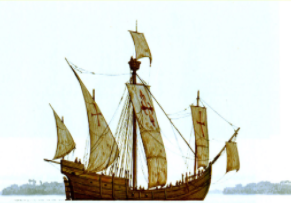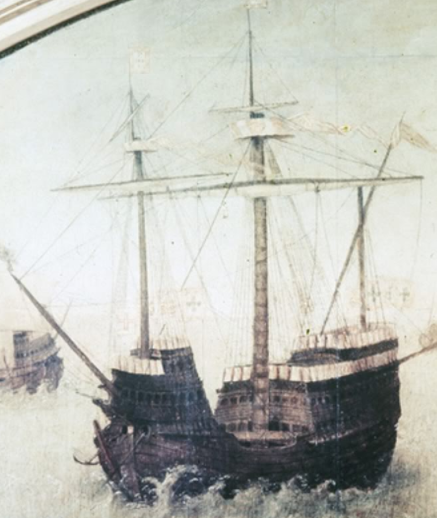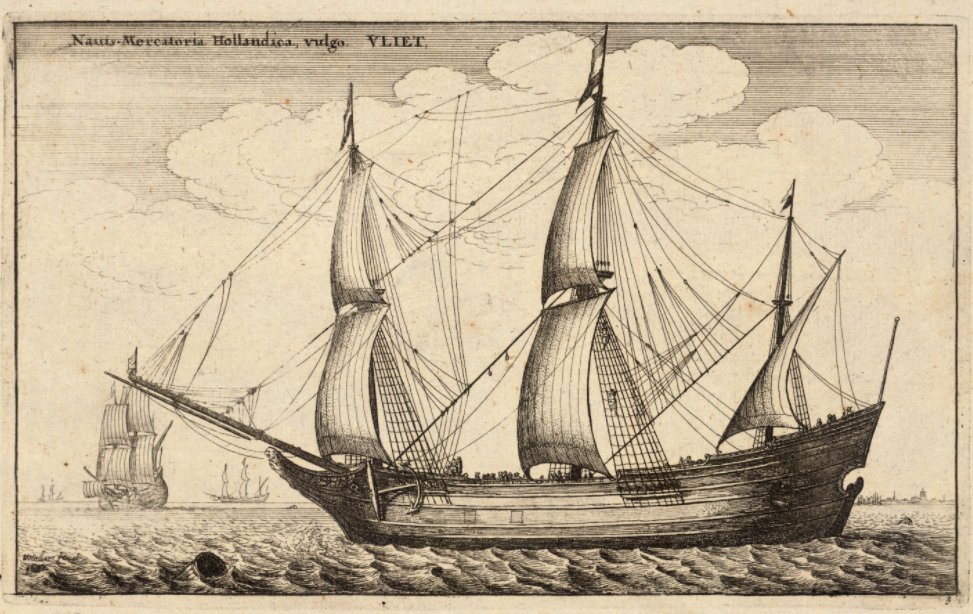4.1 Technological Innovations from 1450 to 1750
7 min read•june 18, 2024
Dalia Savy
Amanda DoAmaral
Riya Patel
AP World History: Modern 🌍
577 resourcesSee Units
4.1 Required Course Content
Thematic Focus: Technology and Innovation
- Human adaptation and innovation have resulted in increased efficiency, comfort, and security, and technological advances have shaped human development and interactions with both intended and unintended consequences.
College Board Learning Objective
- Explain how cross-cultural interactions resulted in the diffusion of technology and facilitated changes in patterns of trade and travel from 1450 to 1750.
Historical Developments
- KC-4.1.II – Knowledge, scientific learning, and technology from the Classical, Islamic, and Asian worlds spread, facilitating European technological developments and innovation.
- KC-4.1.II.A – The developments included the production of new tools, innovations in ship designs, and an improved understanding of regional wind and currents patterns—all of which made transoceanic travel and trade possible.
TL;DR
- Indian, Chinese, and Arab empires contributed to an explosion in new technologies before this time period.
- Innovators were incentivized to improve technology during this time period because they wanted to make money and compete globally.
- Europeans launched massive sea voyages.
- This increased the movement of goods, ideas, and people, sometimes forcefully.
Causes of Technological Innovation, 1450-1750
- To distract from growing discontent among oppressed and poor populations. As social and economic inequality grew, and as the gap between the wealthy elite and the impoverished masses widened, there was increasing dissatisfaction among the latter group. To prevent the emergence of social unrest, many European states turned their attention to exploration and trade, which allowed them to focus on external expansion and the acquisition of wealth and resources, rather than addressing the issues facing their own populations.
- The potential for wealth and power that these activities offered. As European states competed with each other for territory and resources, exploration and trade became important tools for gaining an advantage over rivals. By investing in these activities, European states could potentially reap significant rewards, such as the acquisition of new territories, the establishment of trade routes, and access to new markets and resources.
- The growth of the scientific and intellectual movements during the Renaissance. The growth of knowledge and the development of new technologies, such as the astrolabe and the sextant, made exploration and trade more feasible and profitable. This, in turn, may have encouraged European states to invest more in these activities.
New Technologies
Innovations in Science
🍎 Newton’s Laws of Gravitation
- Provided a mathematical framework for understanding the motion of objects in the universe.
- Allowed for the calculation of the gravitational force between objects, which is necessary for understanding the orbits of planets and other celestial bodies.
- They also provided the foundation for many other scientific developments, such as the development of calculus and the understanding of the behavior of light and other forms of electromagnetic radiation.
🪐 Astronomical Charts
- Allowed for an accurate representation of the positions and movements of celestial bodies, such as stars and planets.
- Led to the prediction of astronomical events, such as eclipses and the appearance of comets.
- Crucial for astronomers and navigators to develop new tools such as the astrolabe and the sextant
🗺 Better mapmaking
- Led to a more accurate representation of the Earth and its features, such as rivers, mountains, and coastlines.
- Facilitated exploration and the establishment of trade routes, as it allowed for better navigation and the identification of potential hazards and resources.
Innovations in Navigation
🌚 Astrolabe
- A tool used for astronomical and navigational purposes. It consists of a flat, circular disk with a rotating pointer, or alidade, and a series of rotating disks called tympans.
- It was used to measure the altitude of celestial bodies, such as the sun and the stars, and to determine the time, latitude, and longitude.
- Used by many famous scientists and explorers, such as Galileo Galilei and Christopher Columbus, and played a role in their discoveries and achievements.
⛵️ Lateen sail
- The triangular sail that is used on small boats and ships. It is mounted on a long, sloping yard that is attached to the mast at the top and the hull at the bottom.
- It allowed for more efficient sailing, as it could be easily adjusted to different wind directions and was more maneuverable than other sail designs.
- Ships could be smaller and more versatile to be used in a variety of environments and conditions.
🧭 Compass
- The compass was first developed by the Han dynasty. In this period, the compass became more reliable and accurate known as the mariner's compass.
- This type of compass was designed specifically for use at sea and used a magnetic needle that was mounted on a pivot and surrounded by a graduated circle. This allowed for more precise readings of direction and made it easier to navigate using the compass.
- The improved compass contributed to the growth of commerce and the spread of ideas.
⚓️ New ships
- Caravel
- The carvel was a type of shipbuilding method that allowed for the construction of stronger and more durable ships
- It was developed in the 15th century and became popular in Europe, particularly in Spain and Portugal.
- It allowed for the construction of larger and more powerful ships, such as the carrack and the galleon.
- Carrack
- The carrack was a type of sailing ship that was developed in the 15th century. It was a large and versatile vessel, with three or four masts and a high, rounded stern.
- It played a significant role in the growth of European maritime power and helped to establish European dominance on the oceans.
- Fluyt
- The fluyt was a type of sailing ship that was developed in the 16th century.
- It was a versatile and efficient vessel, with a long and narrow hull and a single mast.
- It facilitated the growth of commerce and the establishment of trade routes and helped to establish Dutch dominance in the maritime world.

Caravel. Image Courtesy of nautarch.tamu.edu

Carrack. Image Courtesy of Wikipedia

Fluyt. Image Courtesy of Wikipedia
Effects of Innovation
1. The growth of trade and commerce
- The establishment of new trade routes, such as the trans-Atlantic trade between Europe and the Americas.
- The expansion of markets, such as the growth of the spice trade between Europe and Asia.
- The growth of commercial centers, such as the port of Lisbon in Portugal, became a hub for trade and commerce due to its strategic location and the development of new shipbuilding technologies.
2. The spread of knowledge and ideas
- The publication of books and other written works such as the Gutenberg Bible, which was one of the first books printed using the printing press.
- The dissemination of scientific and intellectual ideas, such as the works of Copernicus and Galileo, was widely distributed thanks to the printing press.
- The spread of new religious and philosophical ideas, such as the Protestant Reformation, was aided by the printing and distribution of religious texts and pamphlets.
3. The growth of state power
- The development of more powerful armies, as the use of firearms allowed for the conquest of new territories and the suppression of rebellions.
- The growth of navies, as the use of cannons and other naval technologies allowed for the projection of power at sea and the control of trade routes.
- The establishment of new colonial empires, as the use of firearms and other technologies allowed for the conquest and exploitation of new territories and the subjugation of indigenous populations.
- Before 1450, Europeans did not play a prominent role on the global stage, but after 1450, Europeans were the main puppeteers of the global economy.
4. The global migrations of people
- Enslavement and forced migration of millions of Africans to the Americas, the Mediterranean, and the Middle East.
- Merchants, missionaries, and explorers traveled the global trade networks, moving both temporarily and permanently depending on opportunities.
- Voluntary migrations of job seekers, religious dissidents, and other families looking for greater opportunities.
Explorers to Know
These men contributed to the expansion of European knowledge, peoples, and influence around the world. In each place they "explored", they also morbidly harmed the Indigenous people and cultures they encountered through oppression, slavery, the spread of disease, and institutionalized racism.
- Christopher Columbus was an Italian explorer who is credited with discovering America. Columbus was sponsored by the Catholic Monarchs of Spain, and made four voyages across the Atlantic Ocean, the first of which occurred in 1492. Columbus's voyages were part of a larger effort by the Spanish monarchy to find a westward route to the East Indies, and he believed that he had reached the East Indies when he landed in the Caribbean. However, his voyages also led to the widespread European exploration and colonization of the Americas and had significant consequences for the indigenous peoples of the Americas.
- Vasco da Gama was a Portuguese explorer who was the first European to reach India by sea, which helped to establish trade between Europe and Asia. His voyages made it possible for the Portuguese to establish colonies in the East Indies.
- Hernán Cortés was a Spanish conquistador who conquered the Aztec Empire in Mexico.
- James Cook was a British explorer who made three voyages to the Pacific Ocean, during which he made detailed maps of Newfoundland and explored the coasts of Australia and New Zealand. He also visited many Pacific islands, including Tahiti and Hawaii.
- Henry Hudson was an English explorer who made several expeditions to the Arctic and North America in the early 17th century. During his expeditions, he explored the coast of Canada and discovered the Hudson Strait and Hudson Bay. He also explored the Hudson River, which is named after him. Hudson's expeditions were sponsored by the Dutch East India Company, and he made several trips to the region in search of a northwest passage to Asia.
Browse Study Guides By Unit
🐎Unit 1 – The Global Tapestry, 1200-1450
🐫Unit 2 – Networks of Exchange, 1200-1450
🕌Unit 3 – Land-Based Empires, 1450-1750
🍕Unit 4 – Transoceanic Interactions, 1450-1750
✊🏽Unit 5 – Revolutions, 1750-1900
🚂Unit 6 – Consequences of Industrialization, 1750-1900
💣Unit 7 – Global Conflict, 1900-Present
🥶Unit 8 – Cold War & Decolonization, 1900-Present
✈️Unit 9 – Globalization, 1900-Present
✏️Frequently Asked Questions
🤔Exam Skills
👉🏼Subject Guides
📝AMSCO Notes

Fiveable
Resources
© 2025 Fiveable Inc. All rights reserved.